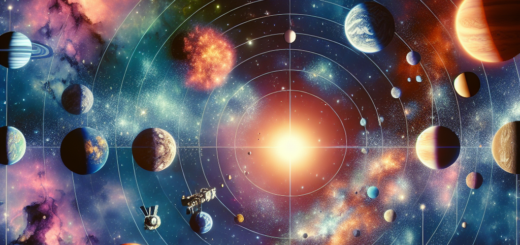Life in the Habitable Zone: Understanding the Conditions for Planetary Habitability
The search for habitable planets beyond our solar system has long been a goal of astronomers and scientists alike. Understanding the conditions necessary for a planet to support life as we know it is crucial in this quest, and one key concept in this search is the idea of the “habitable zone.”
The habitable zone, also known as the Goldilocks zone, is the region around a star where conditions are just right for liquid water to exist on a planet’s surface. This is considered a key ingredient for life as we know it, as water is essential for many biological processes. The habitable zone is not a fixed distance from a star, but rather varies depending on the size and temperature of the star itself.
In our own solar system, Earth is located in the habitable zone of the Sun, where temperatures are neither too hot nor too cold for liquid water to exist. Mars, on the other hand, lies just outside the habitable zone, with its thin atmosphere and cold temperatures making it inhospitable to life as we know it. Venus, despite being closer to the Sun than Earth, is also not considered to be in the habitable zone due to its extremely hot temperatures and thick, toxic atmosphere.
When looking for potentially habitable exoplanets, astronomers search for planets that are located in the habitable zone of their host star. This can be determined by factors such as the size and temperature of the star, as well as the distance of the planet from the star. Planets that are too close to their star may experience extreme heat, while those that are too far away may be too cold for liquid water to exist.
In addition to being in the habitable zone, a planet must also have the right atmosphere and composition to support life. For example, a planet with a thick atmosphere like Venus may experience a runaway greenhouse effect, making it too hot for life to thrive. On the other hand, a planet with a thin atmosphere like Mars may not be able to retain enough heat to support liquid water on its surface.
Other factors that can affect a planet’s habitability include its size, composition, and geological activity. A planet with a magnetic field, for example, can protect its atmosphere from being stripped away by stellar winds, while a planet with tectonic activity can recycle nutrients and support a stable climate.
Overall, the concept of the habitable zone is a key factor in understanding the conditions necessary for planetary habitability. By studying the characteristics of exoplanets located in this zone, astronomers can better assess their potential for supporting life as we know it. As technology advances and our understanding of the universe grows, we may one day discover a truly habitable planet beyond our solar system, bringing us one step closer to answering the age-old question: are we alone in the universe?













